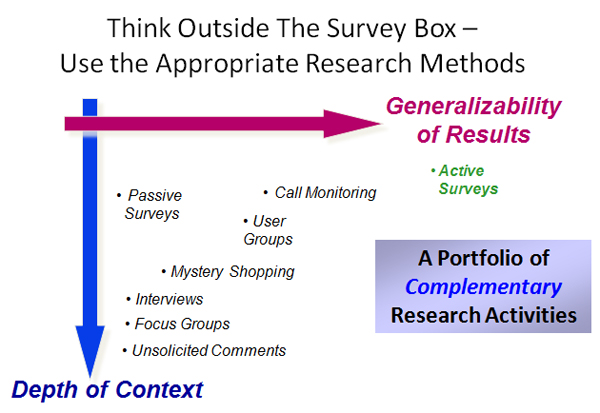Was It “A Flight Attendant from Hell” or a Customer Who Should Be in Purgatory?
Summary: Are customers always right? A Wall Street Journal article raises the question of whether the customer or the service agent was the disagreeable party.
~ ~ ~
An article in the January 7, 2012 edition of the Wall Street Journal provoked a strong reaction among readers, including me. The title, “A Flight Attendant from Hell” was accompanied by a drawing showing a flight attendant with horns. Nothing subtle here. So what prompted this?
The author and novelist, Marisa Acocella Marchetto, was flying back to Rome from New York when her stomach turned into a knot. She acknowledged in her article, “Why did I have that spicy spaghetti dish the night before? More important, why didn’t I have Nexium with me in the first place.” And, she noted, she had had a hiatal hernia.
I can empathize with her to a point. I have an acid stomach that flares up occasionally but severely. When it does, I am in sheer pain. That’s why I am never more than 2 minutes from a Pepcid or equivalent. I keep a cache in my car, in my briefcase, and in my suitcase. I never want to be in Marisa’s position. If I were going on an overseas trip, you bet that I would travel with my prescription medications close at hand.
Ms. Marchetto’s mom and traveling companion called for the soon-to-be-demonized flight attendant, asking for a Nexium. The flight attendant said the only medication they had was aspirin. Now, Nexium is a prescription medication. Who would ever expect to get a prescription drug from a non-medical person operating in an official position?
Ms. Marchetto’s mother asked for a satellite phone so she could call her daughter’s doctor, but the flight attendant, now referred to as Annie Wilkes in “Misery,” said, “I’m calling our doctor,” meaning “the Good Samaritan Hospital… in Phoenix, Arizona.” The ellipsis Ms. Marchetto adds for emphasis indicates that she thinks the physical location of a call center matters. D’oh! Either that or she has a personal disdain for Phoenix.
In fact, the Journal had an article on July 11, 2002 about this very call center, MedAire, noting that the number of diverted flights for medical emergencies had declined. The particular requirements of medical problems in flight led to this entrepreneurial creation of a doctor-staffed call center for airlines. I wonder what Ms. Marchetto would have written had the airlines not established such a medical delivery system. Or does she think every flight should be staffed with a doctor and a complete pharmacy of prescription drugs? Would she be willing to pay the extra costs?
The flight attendant told a pilot from the airline who was dead-heading on the flight that he could not give her a Nexium and then told a nurse who was a passenger and took some vital statistics, “If you give her a Nexium, then you’re responsible if she has a heart attack.”
Ms. Marchetto expressed annoyance at the call center doctor asking basic information — and that they wouldn’t believe her self-diagnosis. The doctor determined from the symptom description that Ms. Marchetto was suffering from a heart attack. We never learn why the misdiagnosis, which apparently it was. Maybe that will come out. But what if it had been a heart attack and Ms Marchetto had been treated based on her requests. Who would she have blamed? Herself? I doubt it.
I fly a lot, and certainly some flight attendants leave a lot to be desired, particularly on US airlines, particularly on international flights. However, I have been on flights with medical emergencies, and the crew has acted in a professional, caring, speedy manner. (In fact, I no longer use my academic title, “Dr.” on flight itineraries to not delay medical care if they searched for a doctor in the flight manifest.)
Perhaps the flight attendant’s manner was improper, but I have a hard time buying the characterization by Ms. Marchetto, given the whiney, self-absorbed nature of the article. Remember how Alec Baldwin portrayed his nemesis flight attendant in the infamous phone-gate episode only to have contrary stories come out.
Ms. Marchetto’s flight was diverted to Shannon, Ireland to get Ms. Marchetto medical attention on the ground. She protested that she was feeling better, and they should continue to Rome. Again, procedures were followed. What if she’d had a recurrence? I suspect the crew enjoyed the trip from Shannon to Rome much more than the first part of the trip.
We live in a litigious society. I don’t like that fact, but it is a fact that we need to deal with. Renters of my Maine house get a House Guide, which includes — up front — information about smoke alarms, CO alarms, fire extinguishers, emergency numbers, hospitals, veterinarians, etc. It is truly well intended, but I also never want to be in the situation where a renter could say, “But we were never told…” My lawyer has taught me well.
Our lease even says tenants will not disable smoke detectors. Why? Common sense isn’t common. I’ve had renters take the batteries out of alarms — why I shudder to ask — and not replace them.
Given the constant fear of litigation, organizations are going to protect themselves, and employees are going to follow the prescribed procedures to protect themselves. Recognize it. Deal with it. And take your own common sense actions to avoid being in a situation where you are at the mercy of what society has done to our economic interactions.
Customers are not always right, and some — think Baldwin — are MTTTW (More Trouble Than They’re Worth). While I am all for good customer service, we in turn need to learn how to be good customers.
Perhaps most astounding is Ms. Marchetto’s belief that the article would elicit sympathy for her position. Apply common sense. Take personal responsibility. If you have a gastric condition, eat properly and keep your meds close by. And don’t try to blame others.

 My wife and I have been regulars at the
My wife and I have been regulars at the 
 My wife and I recently said goodbye to a beloved feline friend whose cancer had spread to her lungs. Our veterinarian at
My wife and I recently said goodbye to a beloved feline friend whose cancer had spread to her lungs. Our veterinarian at